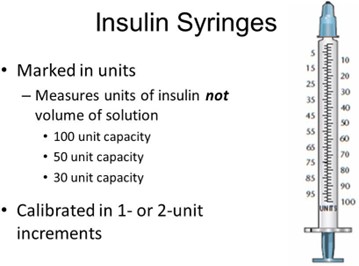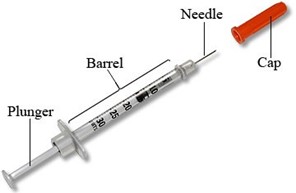The Patient has a nutritional dose of Humalog insulin of 5 units before each meal, plus Humalog insulin per sliding scale.
Blood Glucose Level sliding scale
(mg per dL) Humalog Insulin
If less than 70 and symptomatic administer 1 mg Glucagon IM then call MD 150-200 2 units
201-250 4 units
251-300 6 units
301-350 8 units
351-40010 units
Greater than 400 Call MD
The patient's meal has been delivered. the nurse checks the patient's pre-meal blood sugar, and the result is 64 mg/dL.
The patient is awake, and alert. and able to swallow. The next step the nurse should take is:
Call the MD.
Administer 1 mg Glucagon IM.
Administer 5 units of Humalog insulin.
Encourage the patient to eat their meal.
The Correct Answer is B
Since the patient's blood glucose level is less than 70 mg/dL and they are symptomatic, the first step is to administer 1 mg Glucagon IM. This will help increase the patient's blood glucose level quickly.
After administering Glucagon, the nurse should then call the MD to report the low blood glucose level and discuss any necessary adjustments to the patient's insulin regimen. It is important to note that in this situation, administering Humalog insulin would further lower the patient's blood glucose level and could worsen their symptoms. Encouraging the patient to eat their meal is also important, but it should be done after the administration of Glucagon to help maintain their blood glucose level.
Nursing Test Bank
Naxlex Comprehensive Predictor Exams
Related Questions
Correct Answer is C
Explanation
Based on the assessment findings presented, the nurse would suspect a urinary tract infection (UTI). The client's symptoms of acute confusion, urinary frequency and incontinence, and elevated WBC count with bands suggest a possible infection. Dehydration or diabetic ketoacidosis could also cause confusion and fatigue, but these conditions are less likely given the normal BMP and CBC results.
Hepatitis would not typically present with these specific symptoms.
Correct Answer is C
Explanation
An insulin syringe is measured in units (U). The concentration of insulin is usually expressed in units per milliliter (U/mL), and the volume of the syringe is also measured in milliliters (mL), but the actual dosing of insulin is in units. It is important to use the correct syringe size and to measure the correct number of units to ensure accurate dosing of insulin.


Whether you are a student looking to ace your exams or a practicing nurse seeking to enhance your expertise , our nursing education contents will empower you with the confidence and competence to make a difference in the lives of patients and become a respected leader in the healthcare field.
Visit Naxlex, invest in your future and unlock endless possibilities with our unparalleled nursing education contents today
Report Wrong Answer on the Current Question
Do you disagree with the answer? If yes, what is your expected answer? Explain.
Kindly be descriptive with the issue you are facing.
